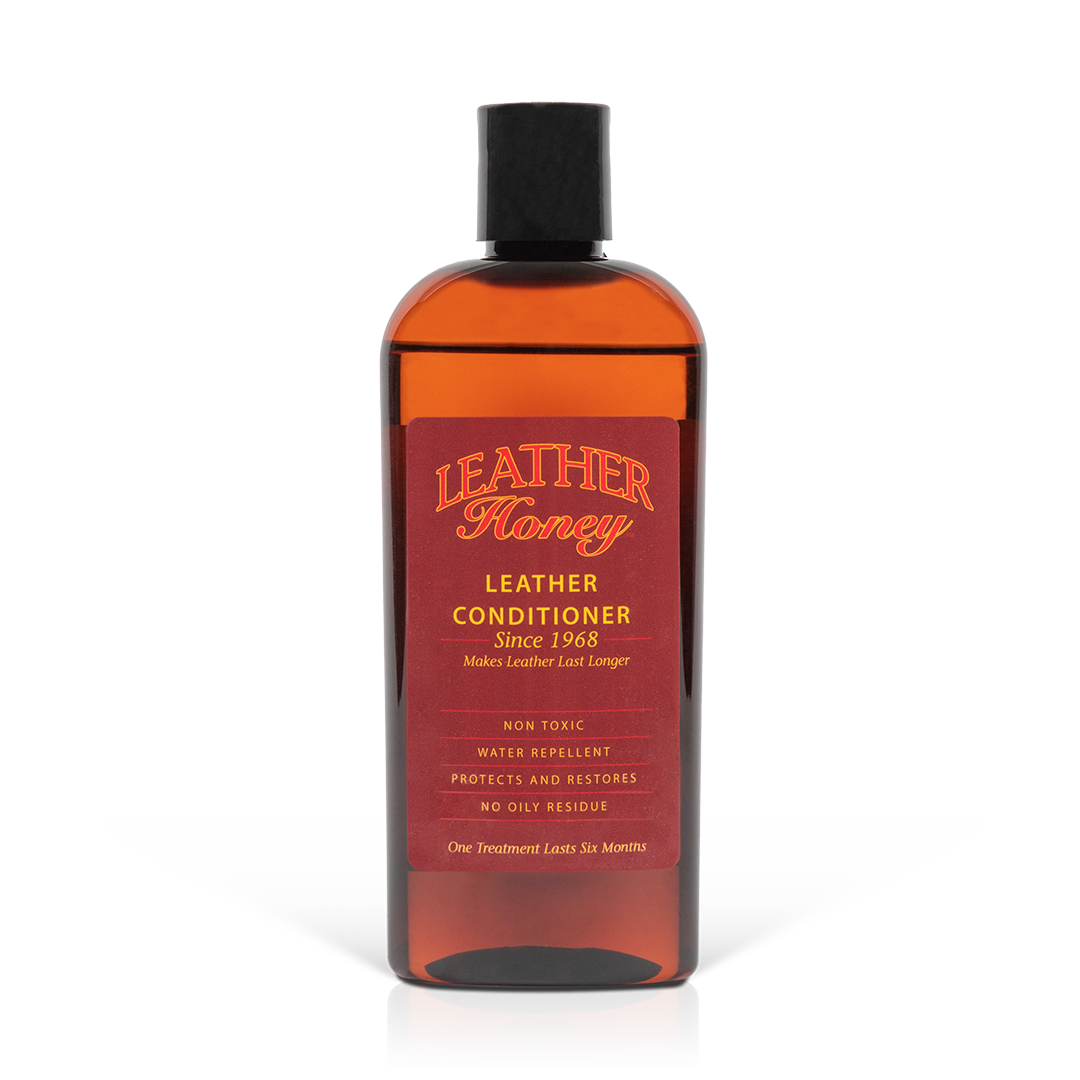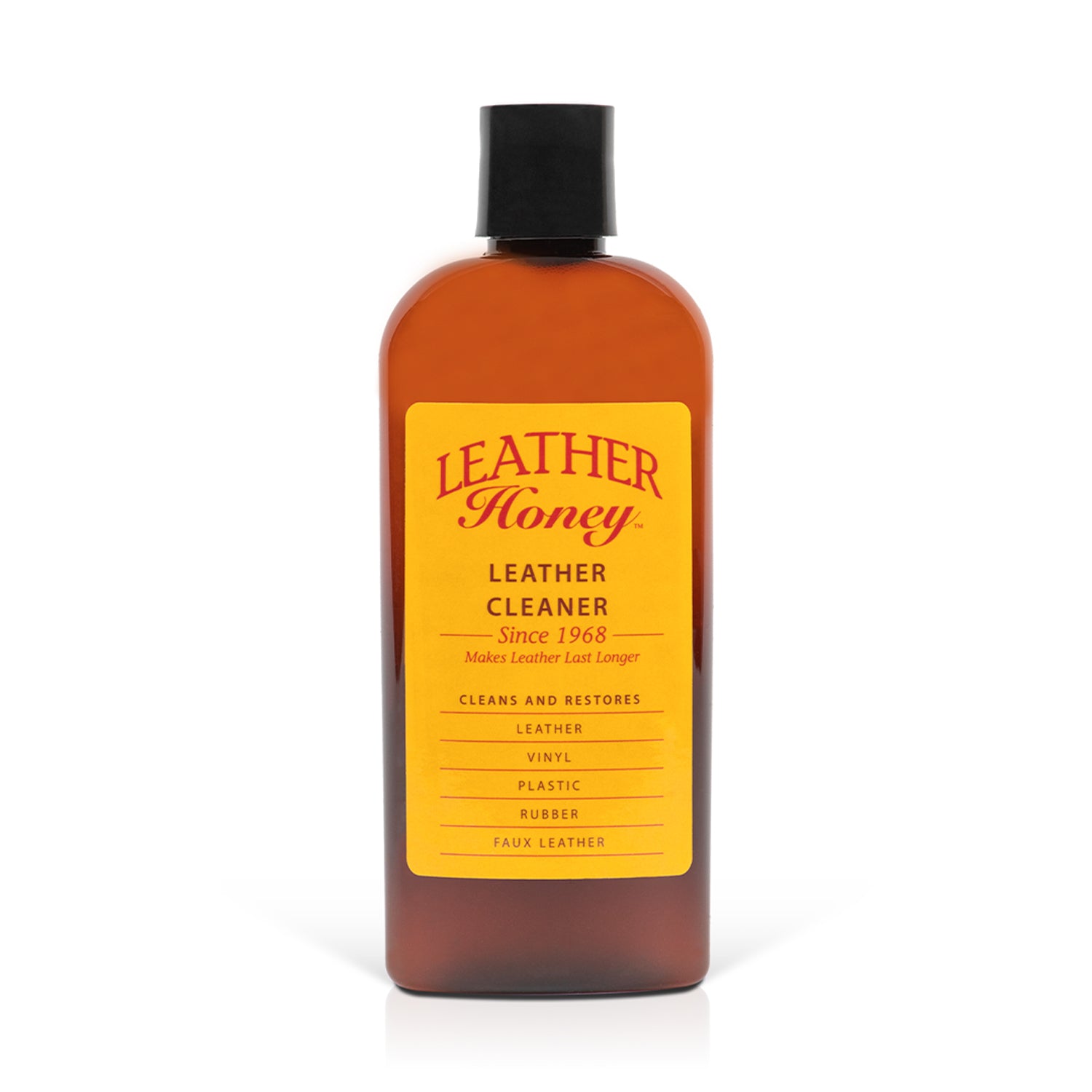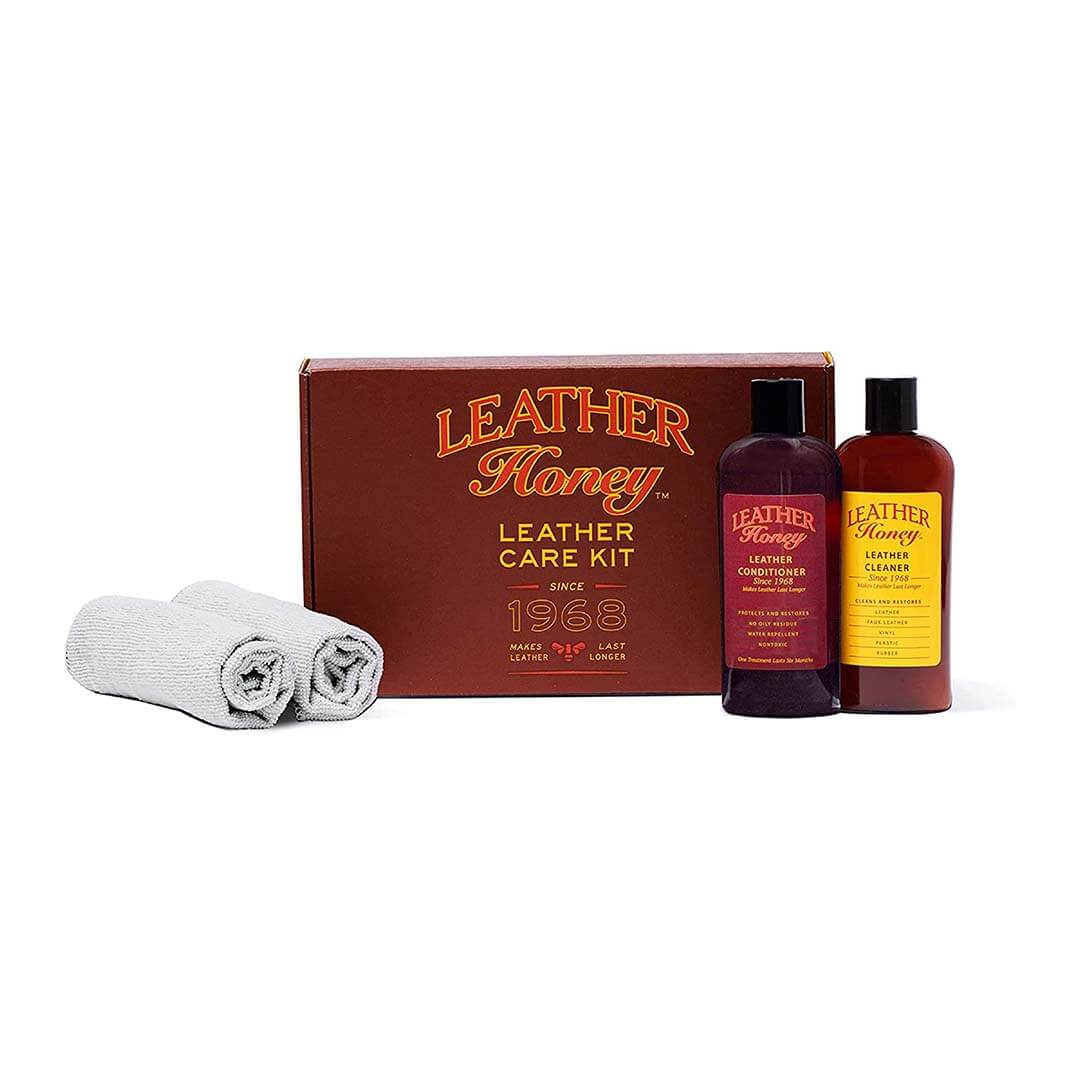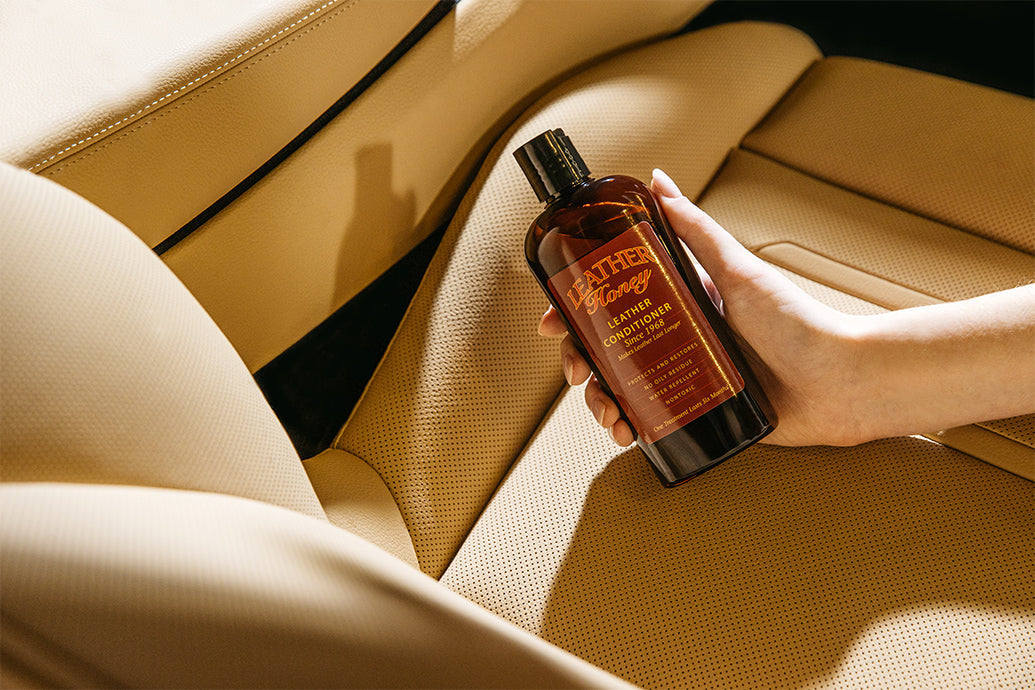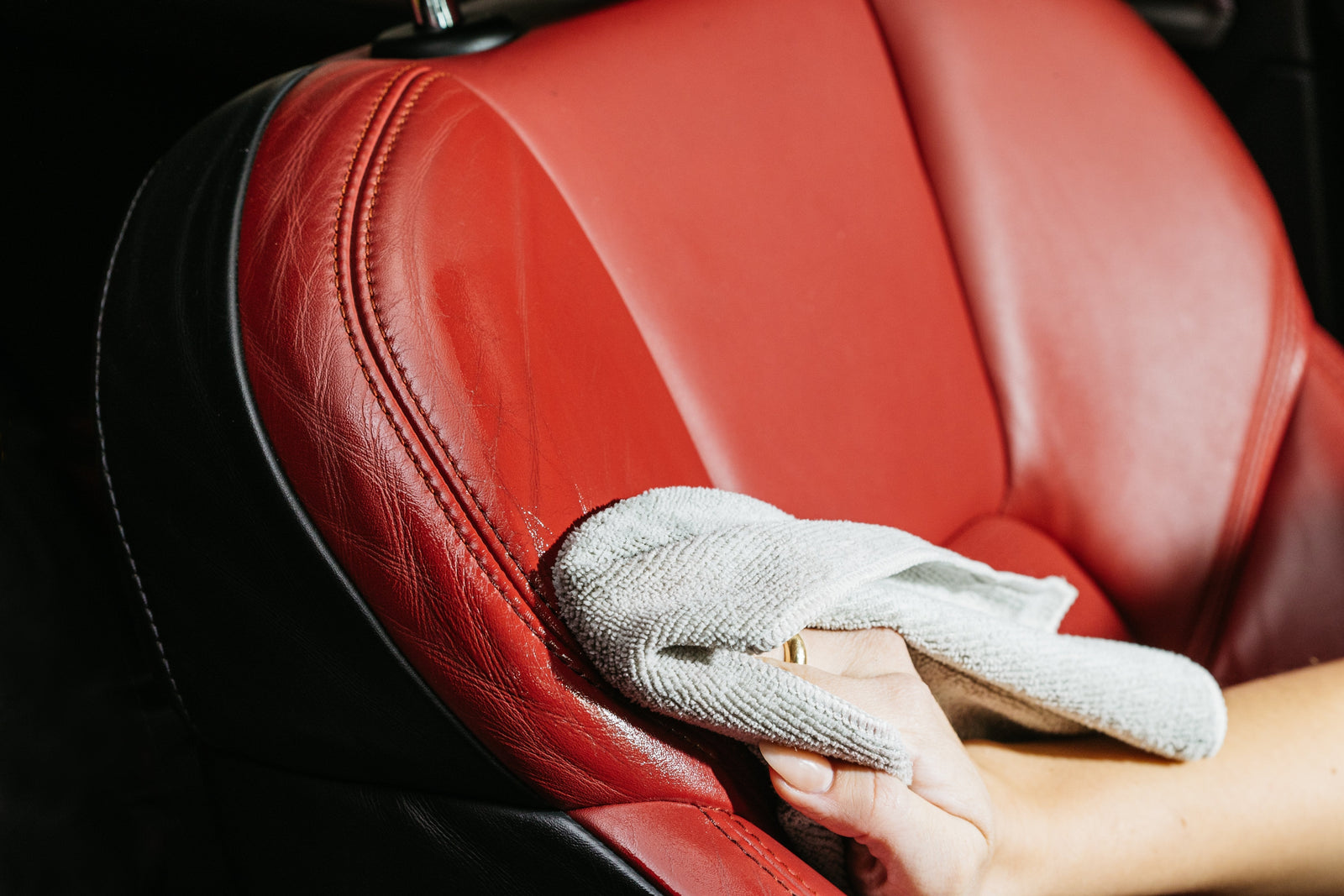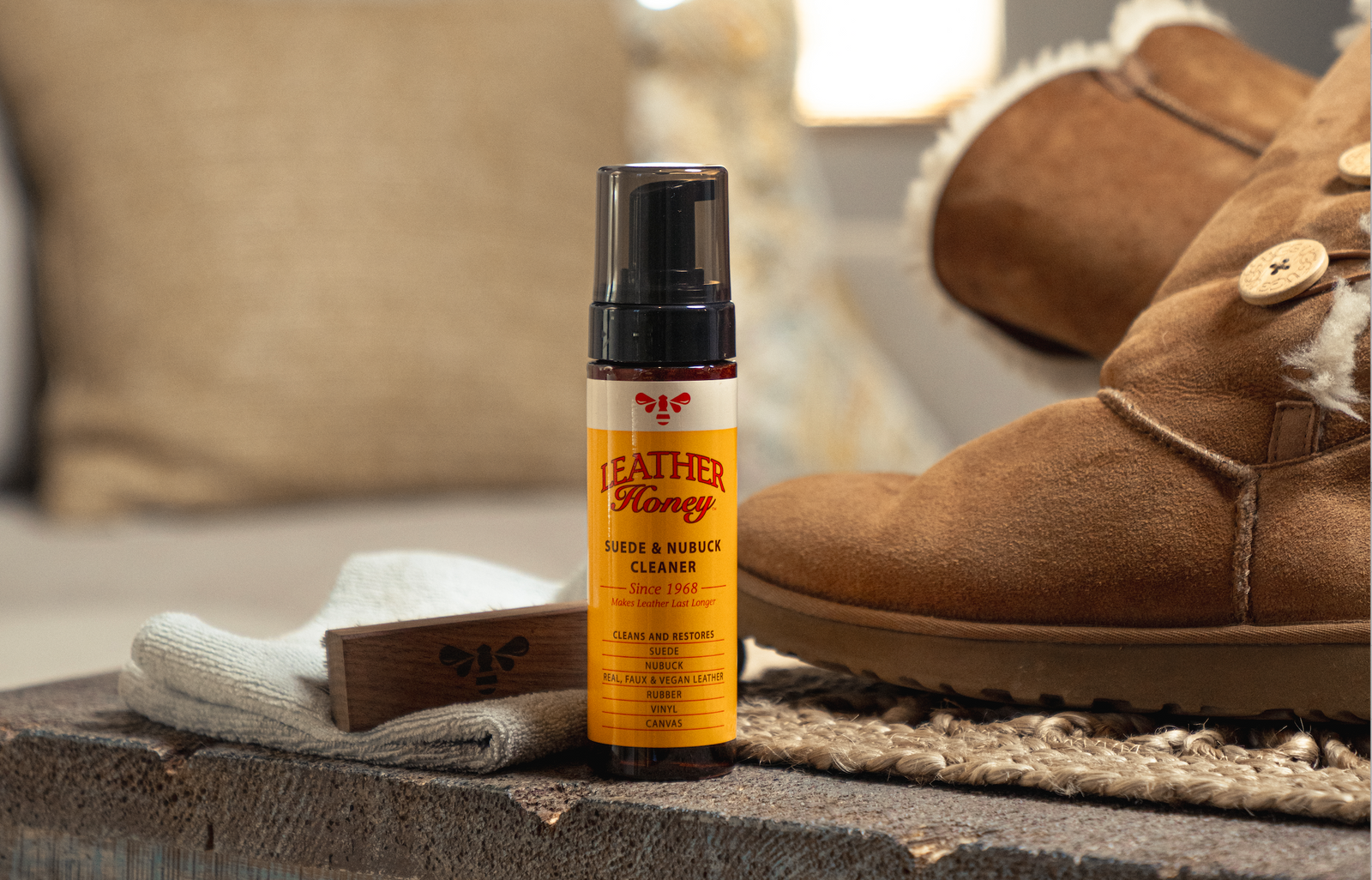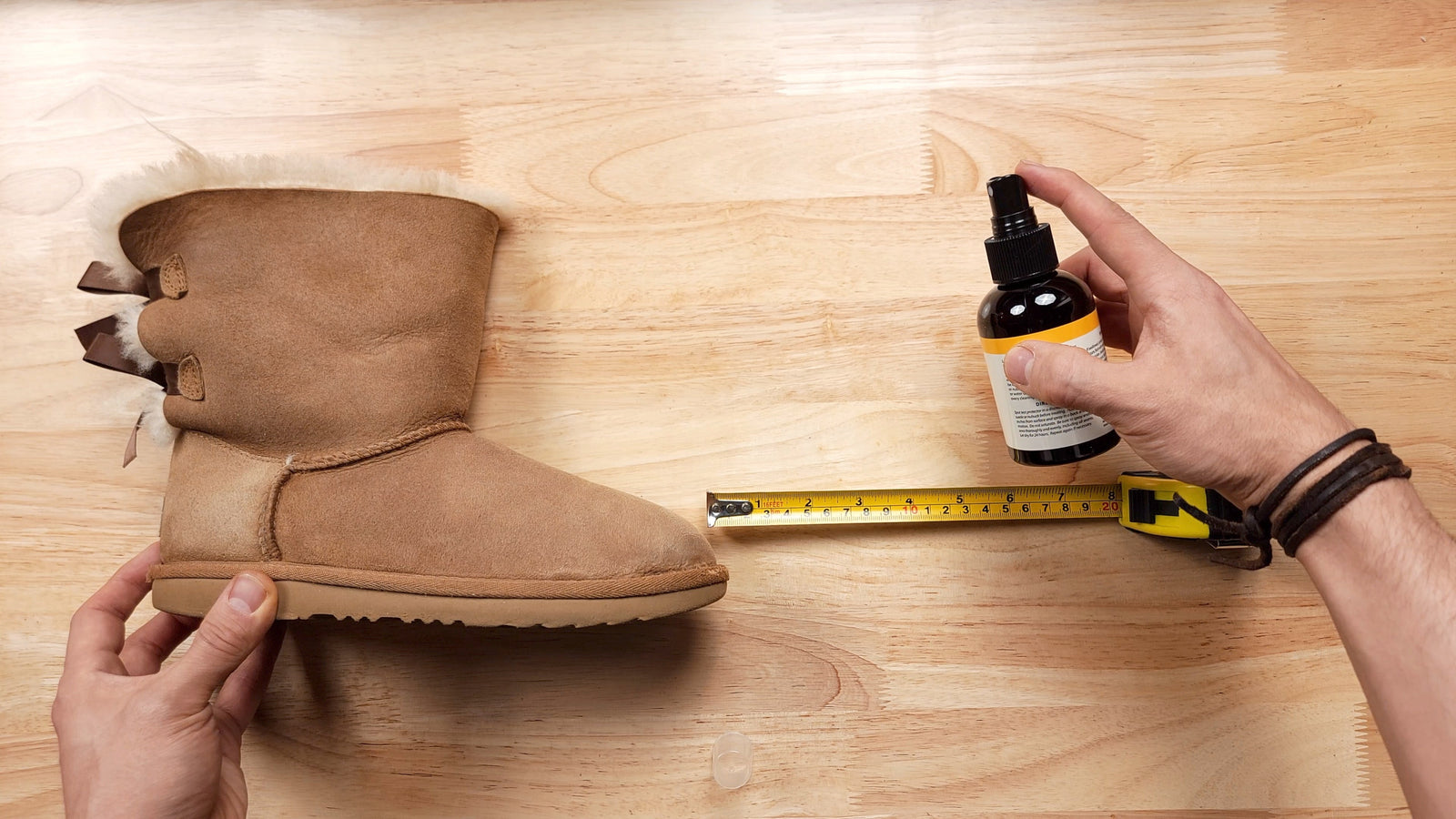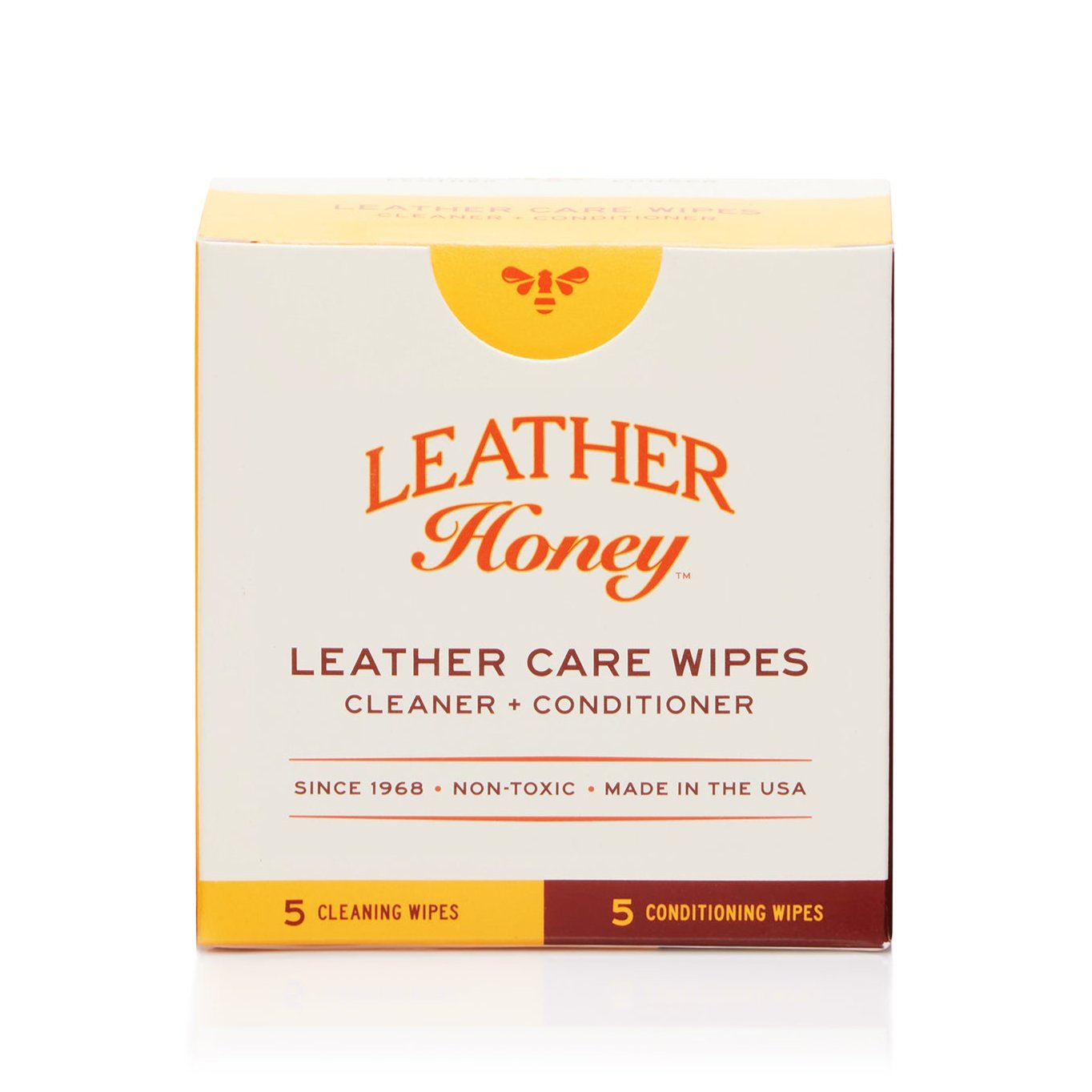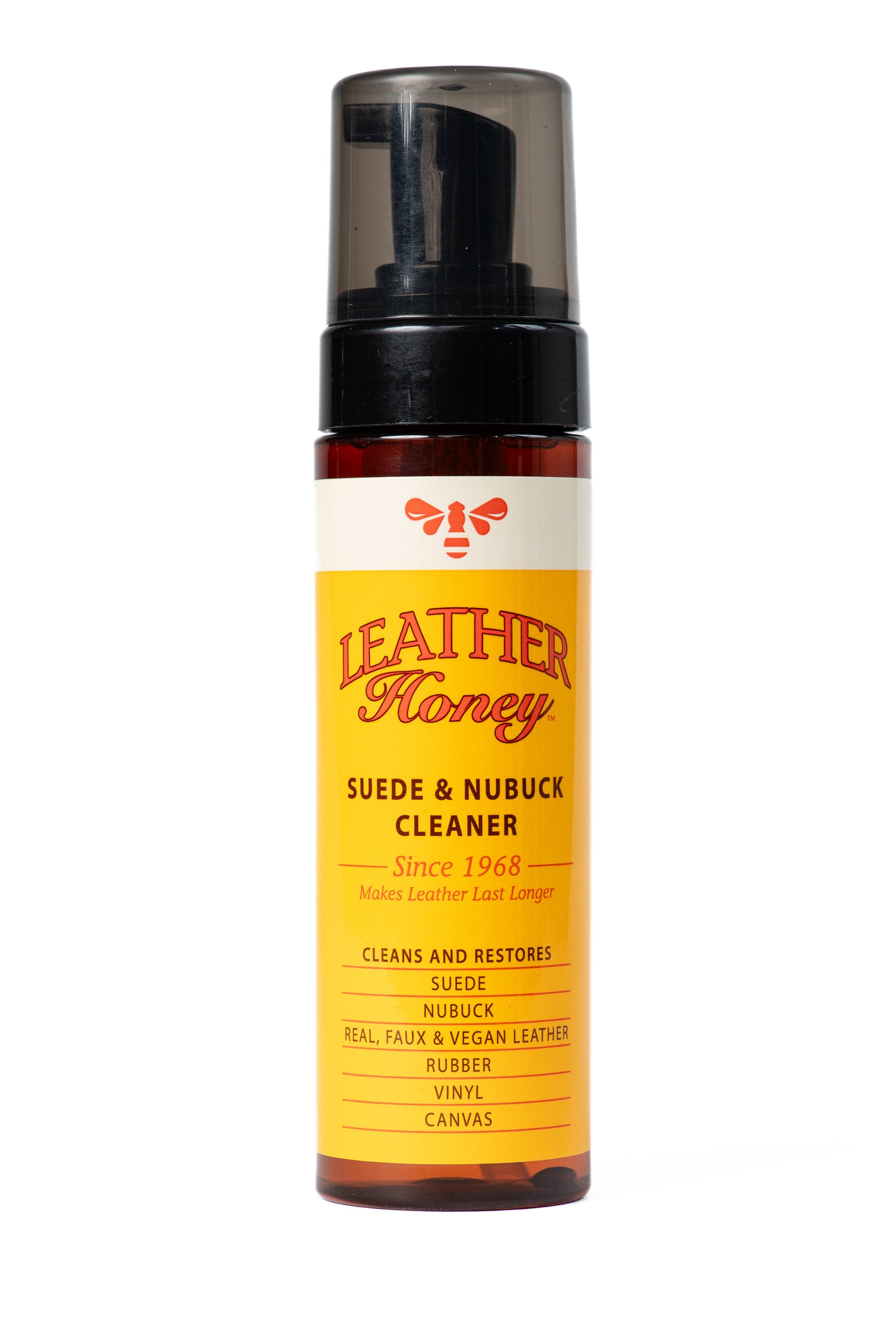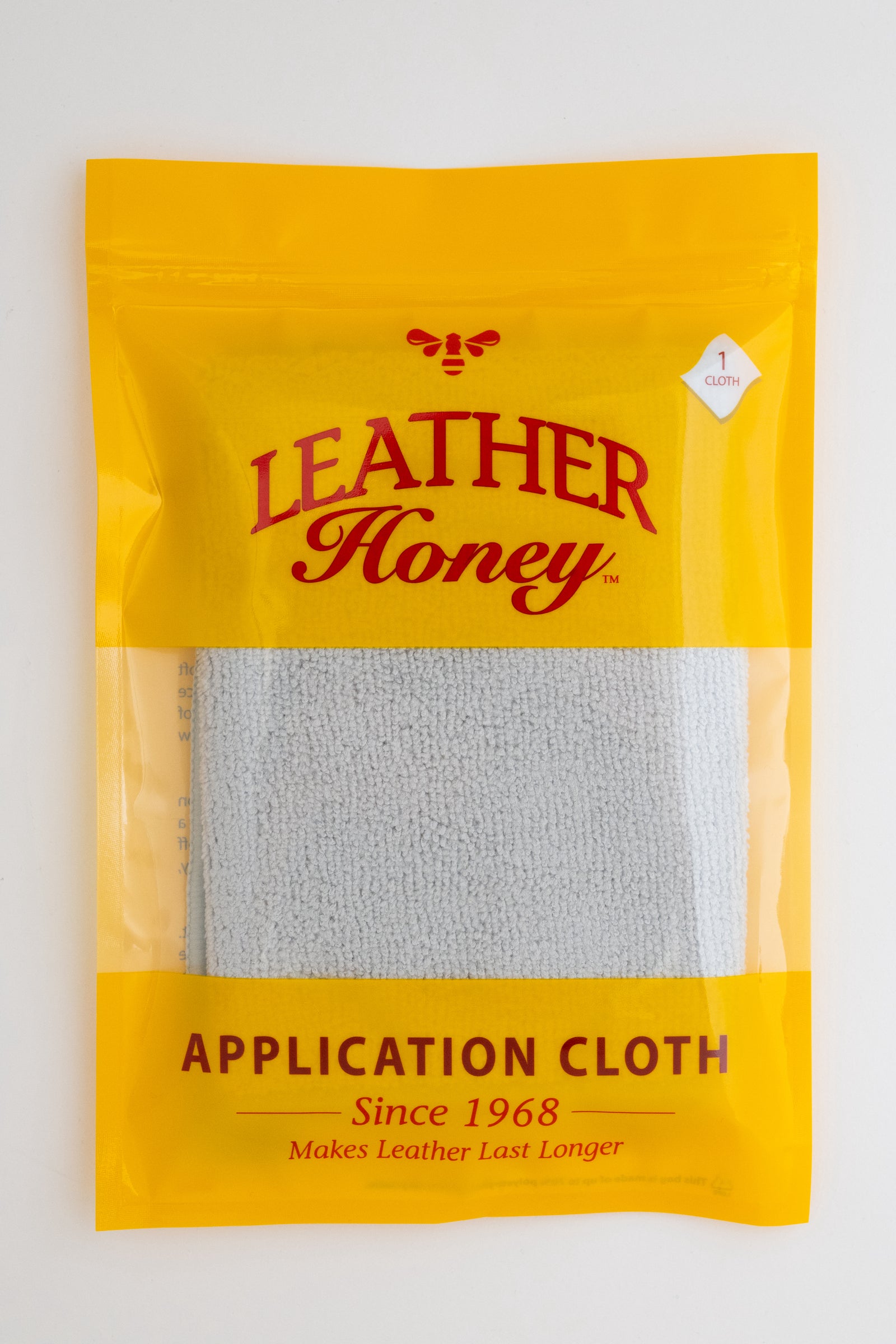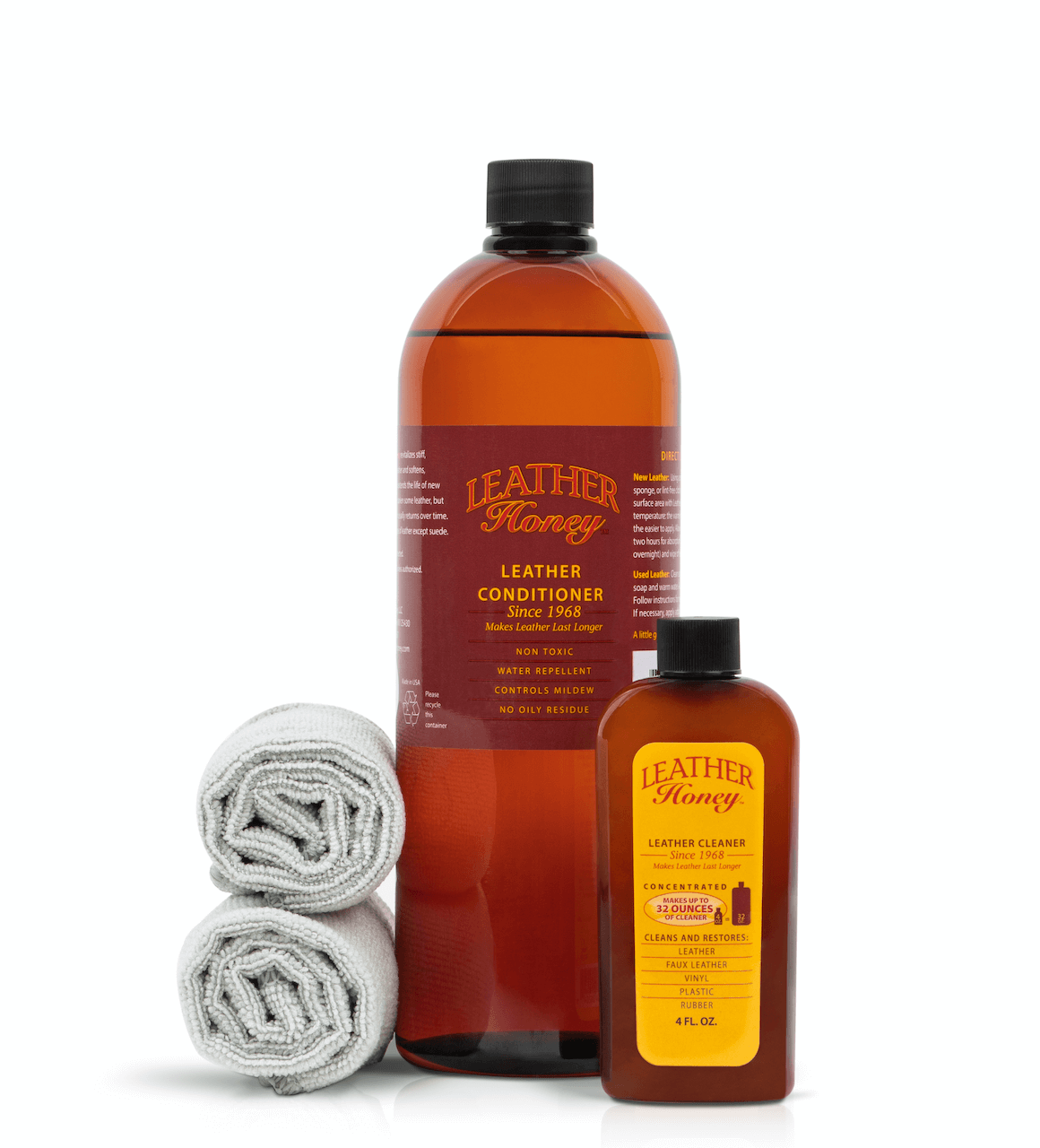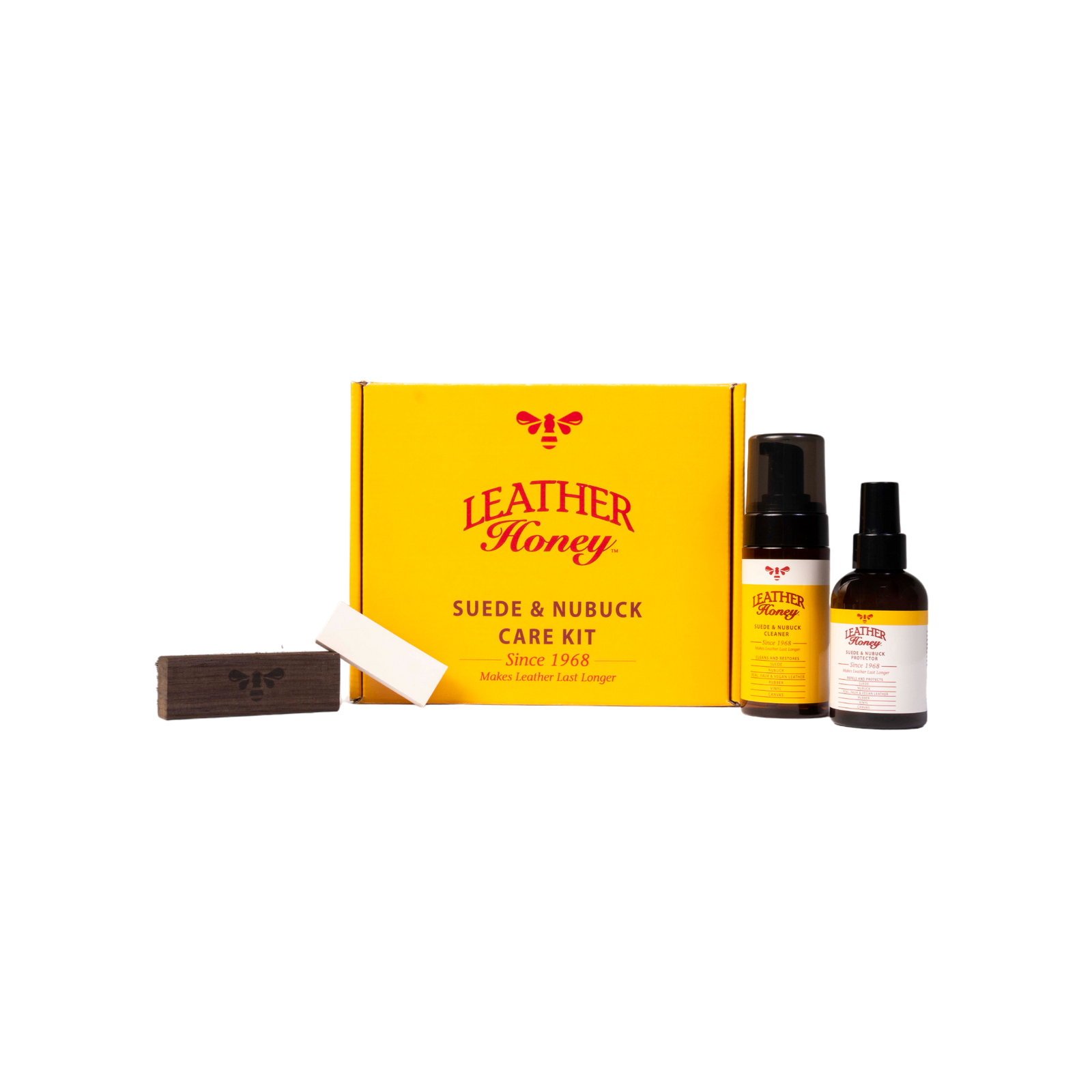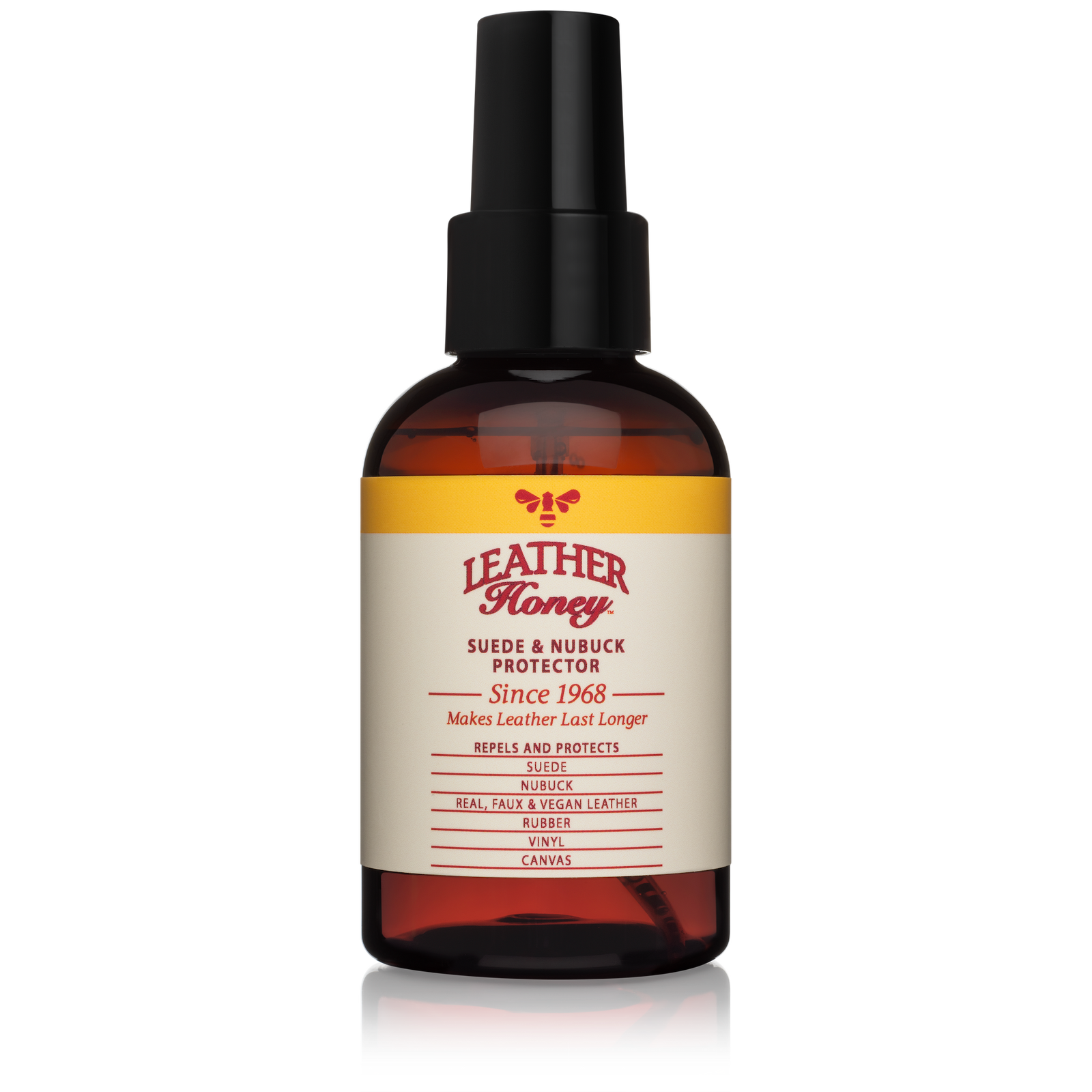Leather is expensive and often carries sentimental value. High-quality leather items can be passed down from generation to generation, especially if they’ve been treated with care.
The key to that process is a good leather conditioning and care regimen. Genuine leather is a natural material derived from a hide, and as such, it contains natural oils from the animal. Once the leather has been treated and turned into something else — whether that’s your favorite leather handbag, a jacket or leather car seats — you need to replace that natural oil with a leather conditioner.
The best product to condition leather are natural, rich, oil-based formulas. An oil-based conditioner, such as Leather Honey Leather Conditioner, will penetrate into the leather’s pores, hydrating the individual fibers of the leather from the inside out. Here’s how to choose the best conditioner for leather, including some surprising information about what you don’t want.
How to Choose the Best Conditioner for Leather in 5 Steps

1. Look for Water Repellency, Not Waterproofing
Many people are thrown by this — after all, leather and water don’t get along, and water (including rain) can do serious damage to your leather. But leather is also a porous, natural material, and it needs to breathe. Sealing the leather’s pores with a waterproofer not only prevents that from happening, it also prevents you from conditioning again, at least until that waterproof layer gets worn off. We highly recommend avoiding products designed to waterproof the outside of the leather. The best leather conditioners are water repellent, which allows the leather to breathe.
2. Go for Non-toxic Ingredients
It can’t be overstated: Leather is a simple, natural material, and the products you use on it should be, too. That means skipping chemical-laden products, smelly polishes and thin, watery spray formulas. Sure, initially there might make your leather appear shiny, but they won't do anything to make it last long-term. At best, these products give your leather a superficial boost that wears off quickly. At worst, they can damage your leather by actually drying it out over time. Instead, look for a product that is nontoxic.
3. Avoid Animal Products
This one sounds pretty silly, since you’re applying the leather conditioner to an animal product. But the best leather conditioners don’t contain any food or animal ingredients — no mink oil, no neatsfoot oil, no olive oil. Why? Because these rot and oxidize in the leather over time, which can cause the leather to crack and smell bad. That’s not what you want.
4. Check for Oil-based Formulas

The best conditioners for leather are oil-based. That means it's a thick, rich formula that will penetrate completely into the leather. To make sure your leather conditioner is oil-based, do a spot test in a discreet area. If the spot test is able to absorb, you can move on to the rest of your leather item.
Wax, which is common in leather care products, should be avoided. That’s because wax leaves a sticky, oily residue on the leather, which can ultimately seal the leather’s pores (bad, as we noted above) and damage things that get in contact with your leather, like your clothing. It’s also not good for perforated leather, which is frequently seen in auto leather — it can build up and even turn white in the holes.
5. Read the Product Reviews
In this case, a crowd is often right — the best leather conditioners should have thousands of positive, verified reviews from customers on Amazon and other online platforms. While there will be negative experiences sprinkled in — no product is going to work for every piece of leather — those should be few and far between.
Finally, you’ll thank yourself if you follow the leather conditioner’s instructions carefully. Each product has detailed instructions that are specific to that product’s process, and following them is key to a good experience.

More to Know About How to Choose the Best Conditioner for Leather
Some common questions people have about picking the best leather conditioner.
What is best to condition a leather jacket?
The best thing to condition a leather jacket with is a rich, non-toxic premade conditioner, like our Leather Honey Leather Conditioner.
What is the best thing to moisturize leather with?
The best thing to moisturize leather with is a premade leather conditioner.
Does leather conditioner repair leather?
Yes, leather conditioner can repair leather, especially minor scrapes and dried out leather.
You May Also Like:
